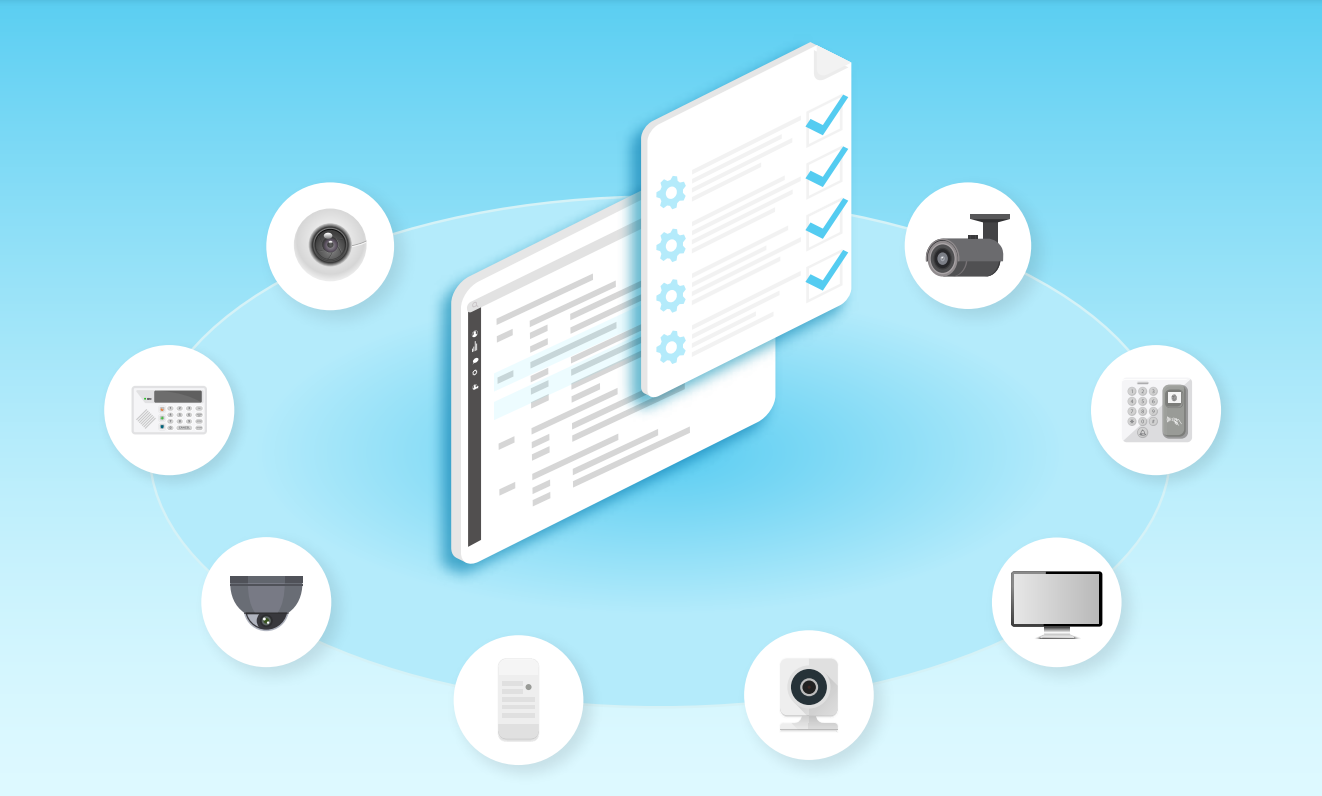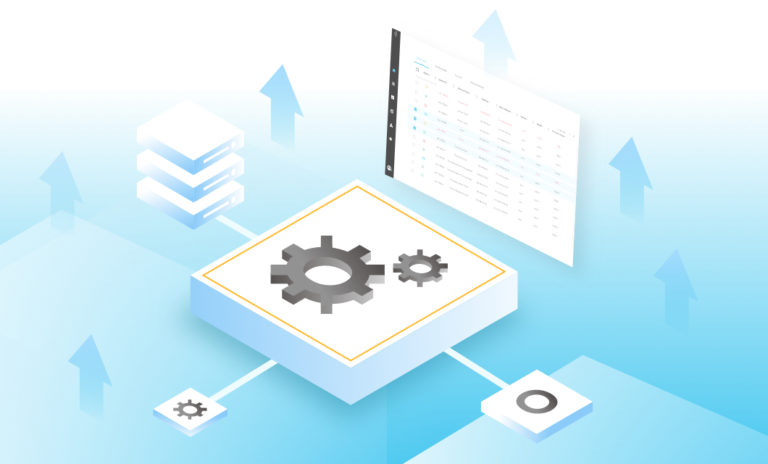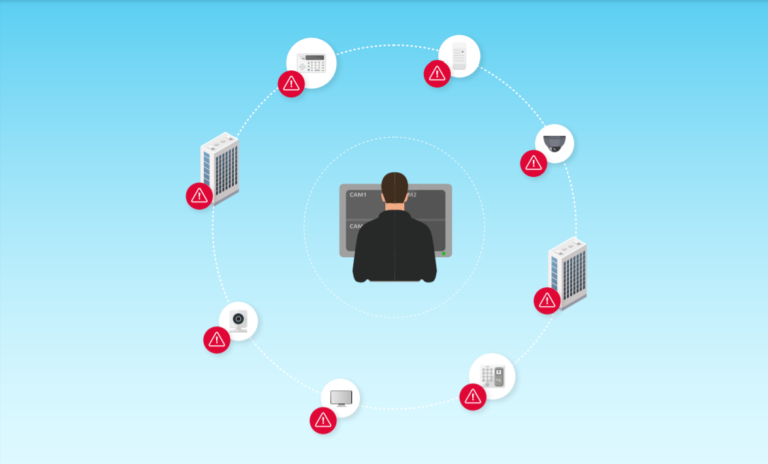There is no question that the ecosystem of physical security devices that rely on the internet of things (IoT) is becoming more complex as organizations become increasingly dependent on these devices. Those trends make the operational management of physical security devices an increasingly difficult and important challenge. That’s why automation has such a critical role to play in making their operational management as simple, efficient, and reliable as possible.
Because managing physical security devices is such a complex objective, it can be difficult to even understand which steps you must take in order to achieve that goal. But when you’re looking to automate the operational management of your physical security devices, it is important to have a general sense of which aspects of that process can be automated. Specifically, you’ll want to understand exactly how automation can help you protect your physical security devices from cyber threats, boost their uptime, and minimize the amount of time and money you need to spend on managing them.
Which of the processes entailed in the operational management of physical security devices can now be streamlined through automation? Why is it so important to automate these steps, and how can you evaluate an automated solution for managing your organization’s physical security devices? To answer those questions, this post will explore the key aspects of the operational management of physical security devices that can (and should) now be automated.

Proactively boosting cybersecurity and device performance through routine maintenance
Much of the necessary operational management of physical security devices is centered on routine device maintenance. By regularly taking steps to protect your physical security devices from threats and vulnerabilities that could put them at risk, you can minimize the likelihood that a device could go offline or face another type of performance issue. No less importantly, those steps can protect you from the danger that one of your physical security devices could be successfully targeted by threat actors. Specifically, the automatable, routine steps involved in maintaining your physical security devices are focused largely on upgrading firmware, rotating passwords, and managing certificates.
Upgrading firmware whenever necessary helps organizations minimize the chances of issues such as device failures and cybersecurity breaches, in part because firmware upgrades often include patches to resolve vulnerabilities. By helping you install firmware upgrades as necessary across an entire fleet of physical security devices, automation offers you a far more efficient and reliable alternative to managing firmware upgrades manually. Not only can automation save you the time (and money) required to install upgrades manually, but it helps ensure that upgrades are installed wherever they should be, whenever they should be.
Although the central aspect of this process is actually installing firmware upgrades on physical security devices, there are many peripheral steps that are necessary to ensure that the right firmware is installed in the right way and at the right time on each device. The more of these steps that are automated effectively, the more efficiently and reliably an organization can handle firmware upgrades. For example, an automated solution for managing physical security devices should determine which devices need to receive upgrades, identify the latest compatible firmware version for any given device, and perform testing to ensure that each upgrade is installed properly.
Similarly, an automated solution should rotate passwords as needed, given that password rotations are another critical way to reduce the likelihood of cybercriminals successfully compromising a physical security device. Automating this process can ensure not only that new passwords are implemented often enough, but also that physical security devices always have strong enough passwords and that they do not use default credentials. In addition, an automated solution should test and verify that passwords are changed successfully and that devices work properly afterwards, with a built-in mechanism for rollbacks in case a process fails.
As for streamlining certificate management, an automated solution should be able to discover, validate, and keep an inventory of SSL and 802.1x certificates across an entire fleet of physical security devices. It should also be able to send requests for replacement certificates in bulk. And to protect against the risk of a man-in-the-middle (MitM) attack during a certificate rotation, the solution should automatically secure the device’s connection.
Addressing device issues, both pre-emptively and in real time
Alongside the routine steps involved in maintaining physical security devices, an automated solution for operationally managing these devices should keep relevant team members updated on the status of each device and automatically notify them about both current and anticipated issues.
Perhaps most importantly, an automated solution should provide real-time alerts when a device issue arises, such as downtime or another sort of malfunction. This solution should also notify the relevant team members about issues likely to arise in the foreseeable future, such as a device reaching its official end of service (the point at which the manufacturer stops providing support services such as new patches for device vulnerabilities). This way, the organization can plan ahead and prepare for expected issues – for example, by replacing a device before it reaches its end of service.
Beyond simply notifying an organization of issues that have arisen or will soon arise, it is important to offer more detailed information to help diagnose these issues and guide the organization in resolving them. For example, an automated solution for managing physical security devices could help with root cause analysis by determining whether an identified issue is limited to a single device or represents a wider problem. These alerts can (and should) include detailed insights into the geo-location, performance, and health of each physical security device within a fleet – key details to help with the diagnosis of the issue.
To empower an organization to take full advantage of the alerts its team members receive, an automated solution should enable these employees to take action remotely in response to these alerts. For example, these professionals should be able to restart a device remotely – a way of fixing a variety of device issues, even when the specific cause of an issue has not been determined. Not only can the ability to resolve device issues remotely empower organizations to get a physical security device back up and running as quickly as possible, but it can also save them the cost of an expensive truck roll for a technician. That makes this capability a real game-changer for many organizations.
IoTOps: Using automation to efficiently optimize device performance
To streamline the operational management of physical security devices through automation, it is important to choose a comprehensive solution. The key to making that happen lies in IoTOps, a practice that allows for the operational management of physical security devices to take place in a consolidated, automated, and secure manner. Through automation, IoTOps empowers organizations both to streamline the routine maintenance of physical security devices and to reliably address device issues (including both issues that have already appeared and those that are likely to arise in the foreseeable future).
The power of IoTOps lies in its ability to help organizations improve their device uptime, cybersecurity, and efficiency. By consolidating and automating the operational management of physical security devices, organizations gain the ability to manage those devices in a cost-effective way, with minimal need for expensive manual and on-site work. IoTOps also provides valuable insights that can help organizations plan ahead (for example, for a device’s end of life), further increasing the cost-effectiveness and reliability of their approach to managing their physical security devices. Additionally, IoTOps brings security concepts and best practices from the IT world to the realm of physical security devices, helping to keep these devices safe from cyber threats.
To make sure that an IoTOps solution is holistic enough to meet the needs of an organization, it must also offer supplementary services, such as customer support and SOC services. That’s why we at SecuriThings don’t only offer organizations our solution, the industry-leading IoTOps solution, but also provide them with training sessions to prepare their team members for self-sufficiency. We also provide comprehensive, professional guidance and advice on best practices on an ongoing basis, as well as SOC services and assistance with diagnosing and understanding device issues that arise.
Ultimately, perhaps the most important advantage of IoTOps in general – and of SecuriThings Enterprise specifically – is that it empowers organizations to maximize the benefits of using their physical security devices. Once you’ve invested in devices to keep your organization and the associated people and property secure, IoTOps helps you maximize device uptime, so that you can enjoy those benefits consistently. In other words, by helping you avoid the damage to your organization’s people, productivity, reputation, and revenue that can result from device downtime and cybersecurity risks, IoTOps enables you to get more out of your physical security investment.




